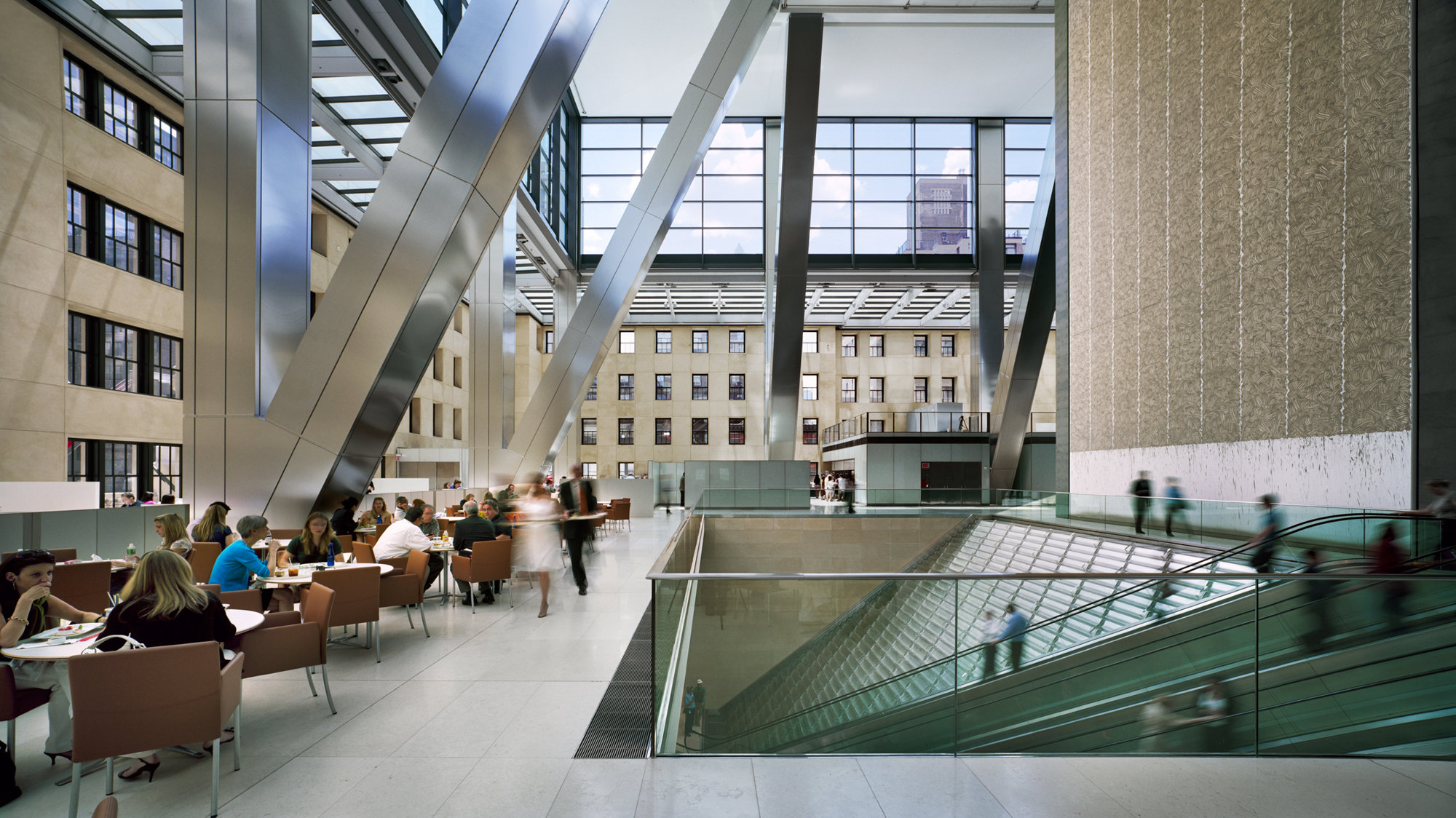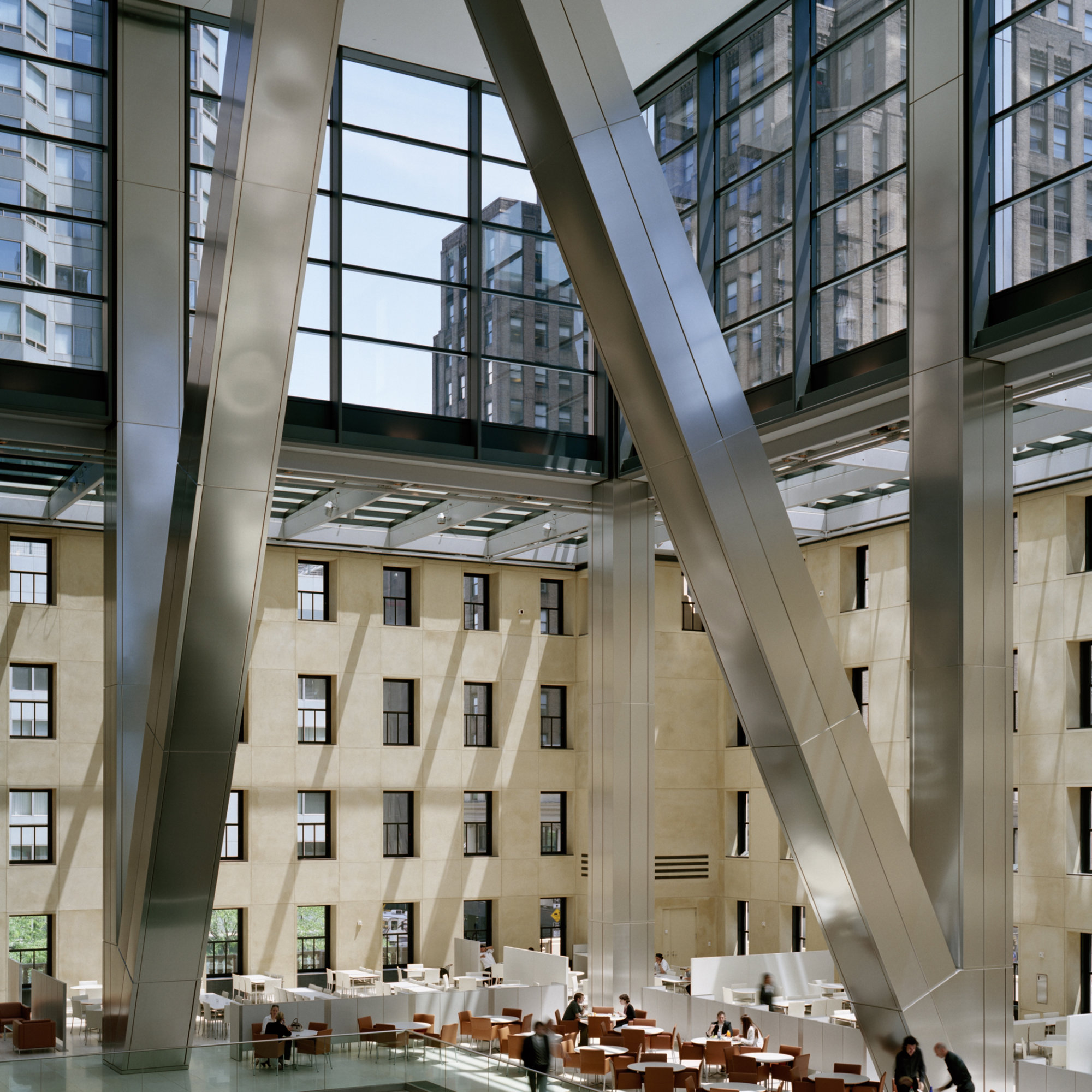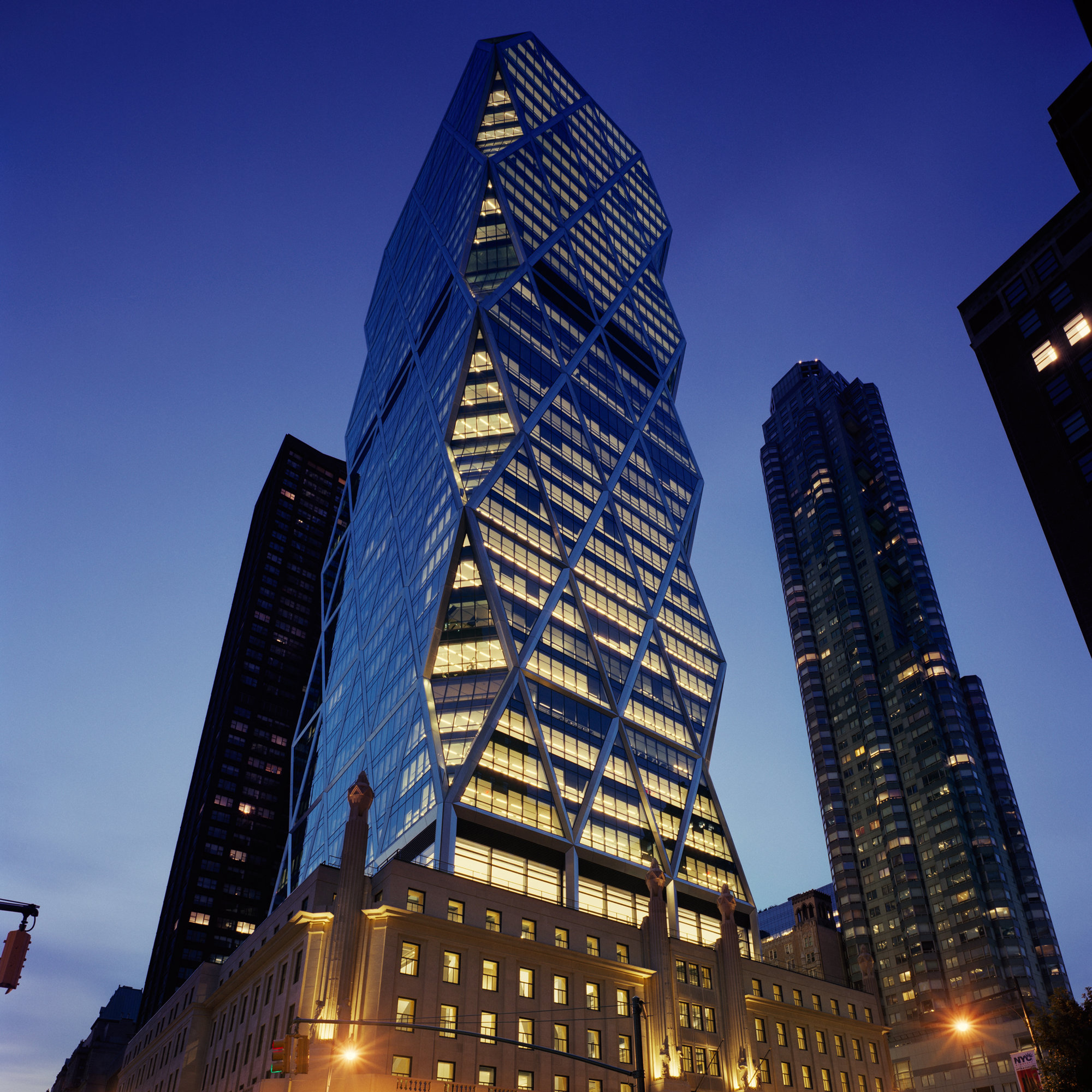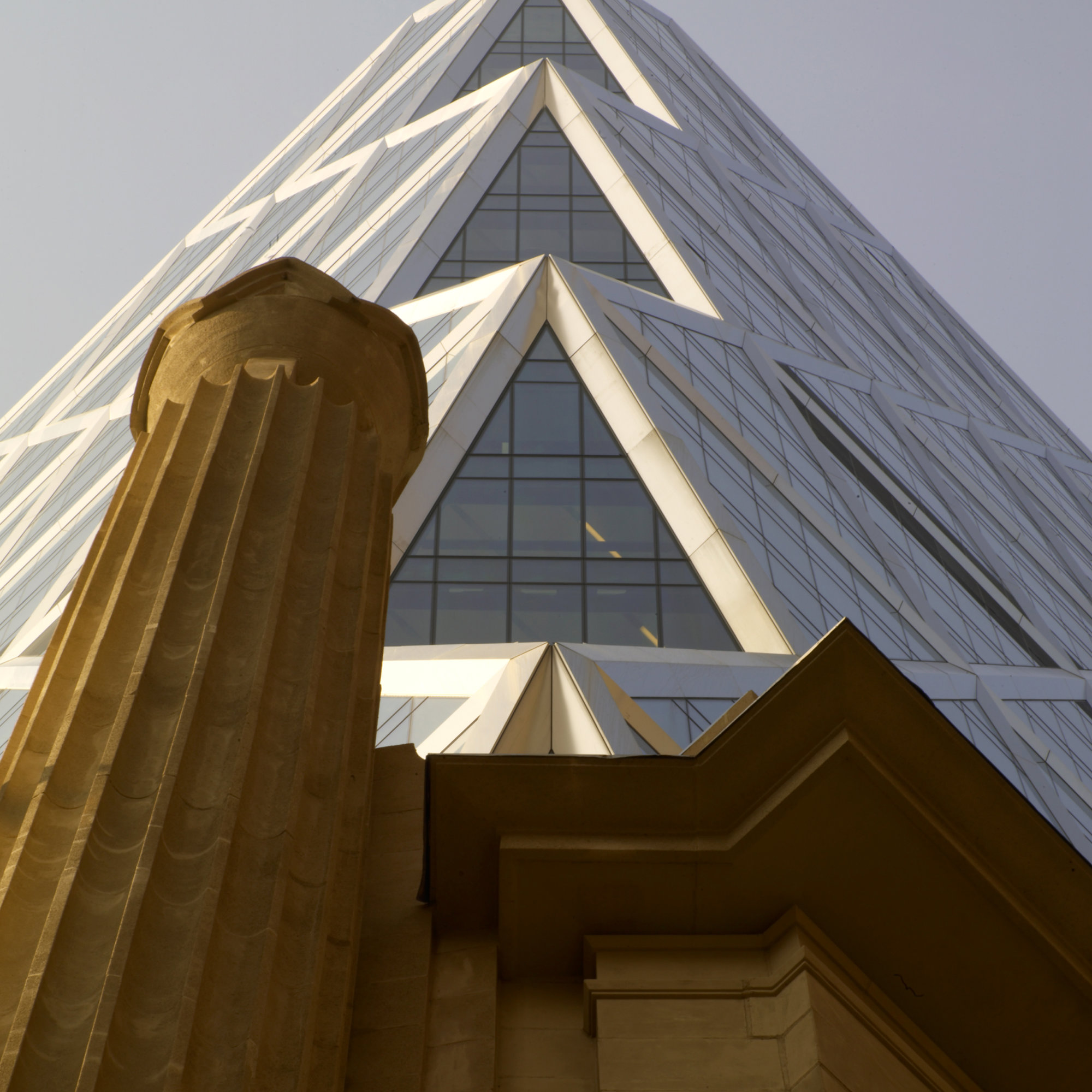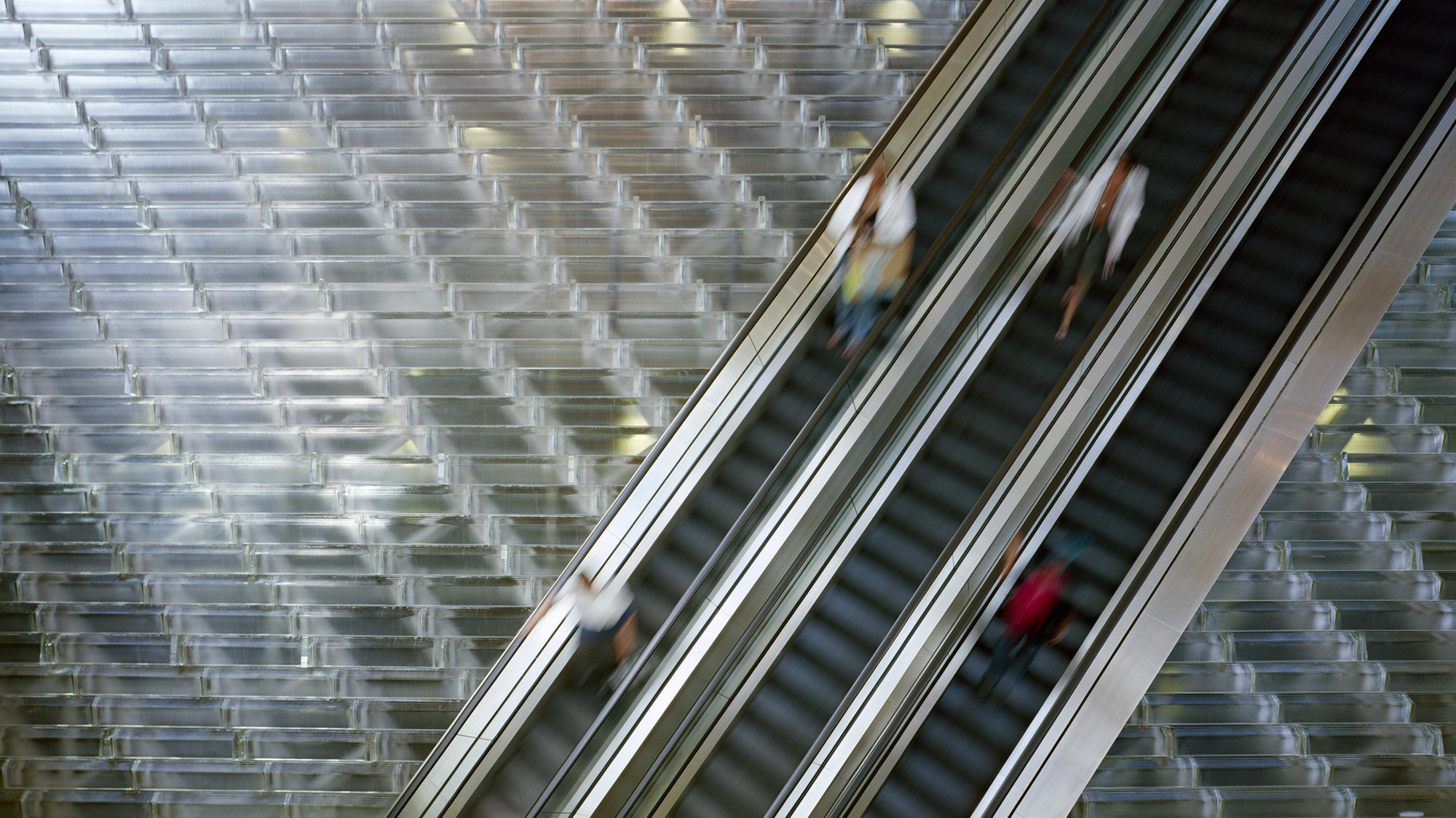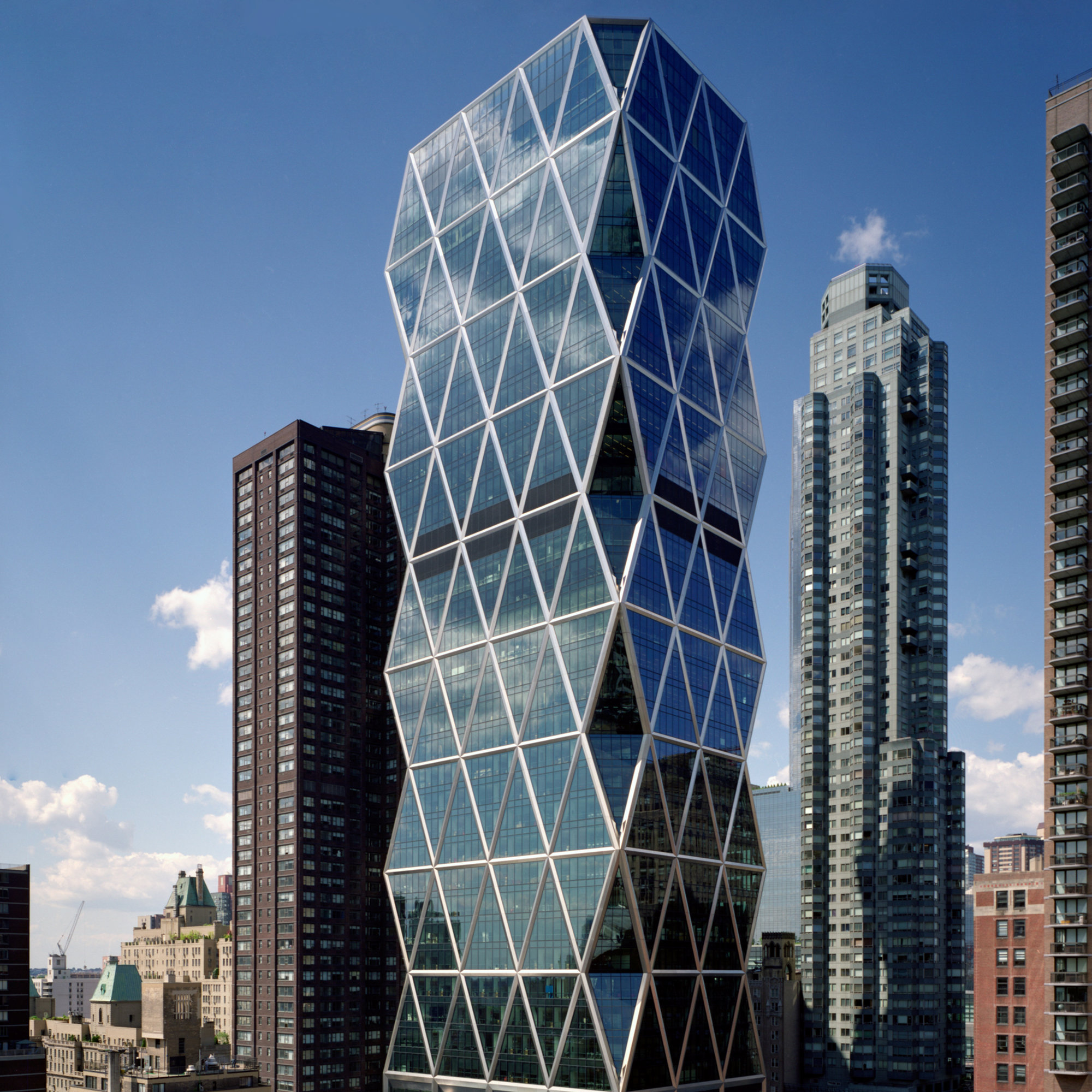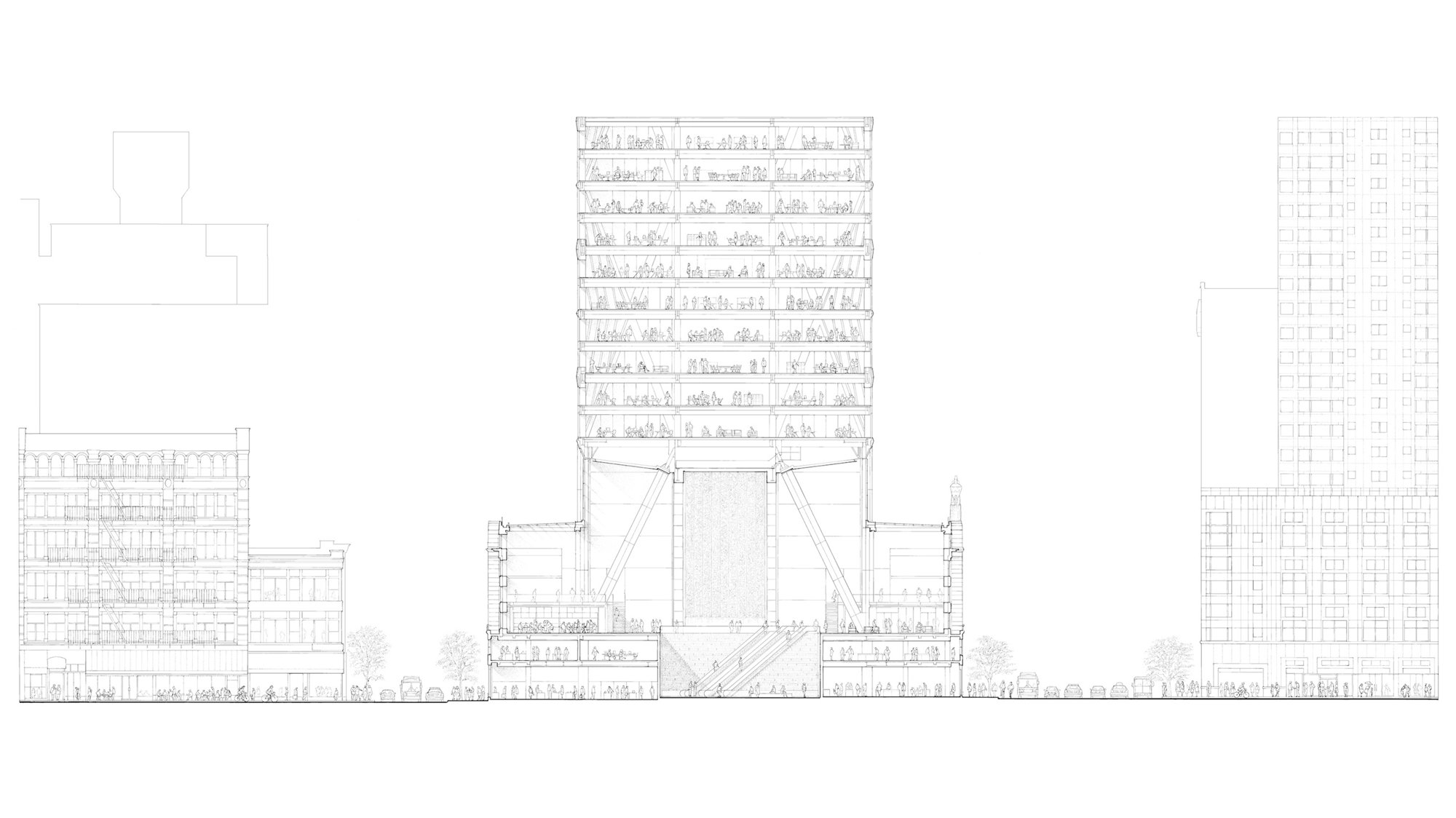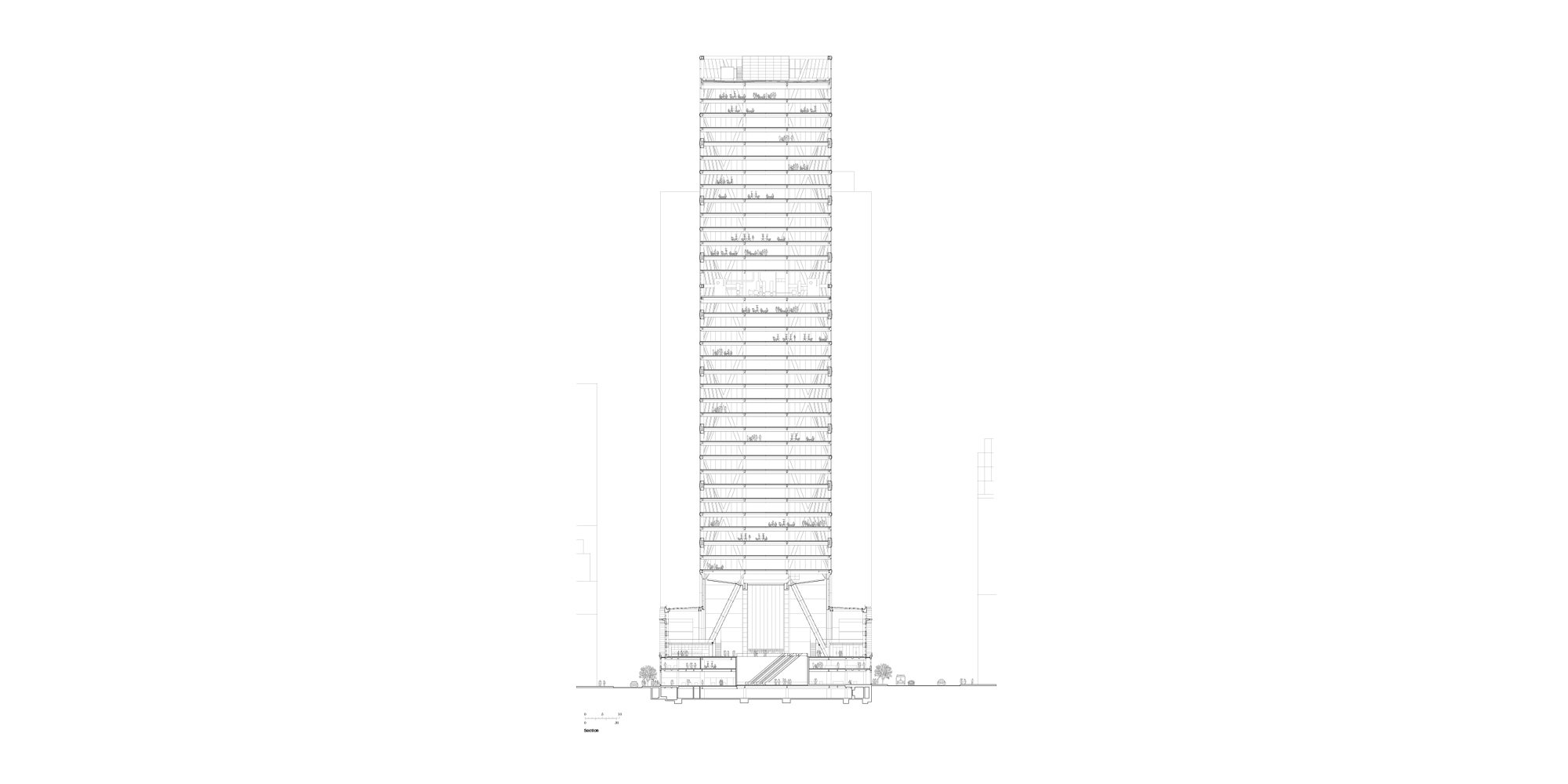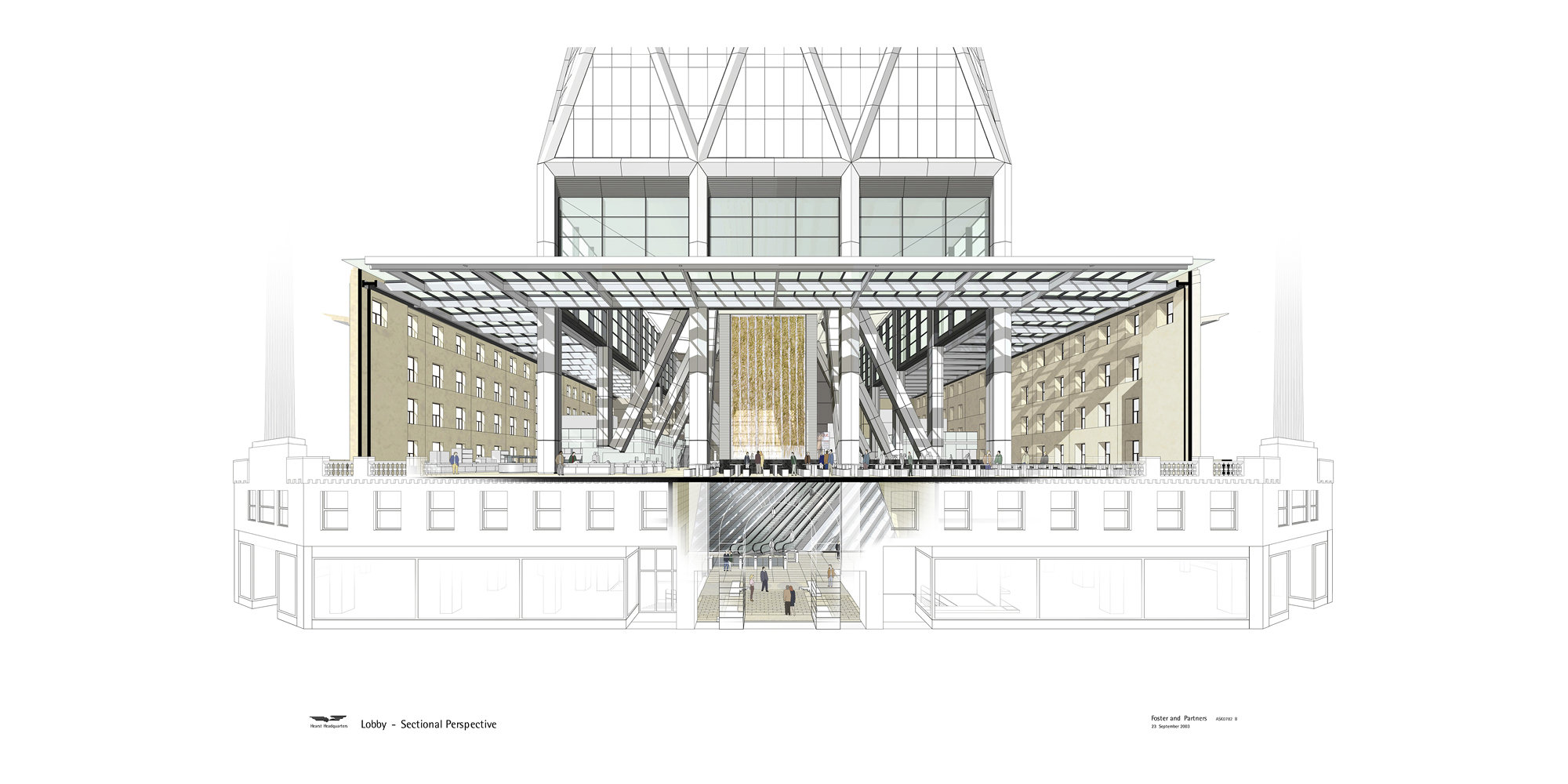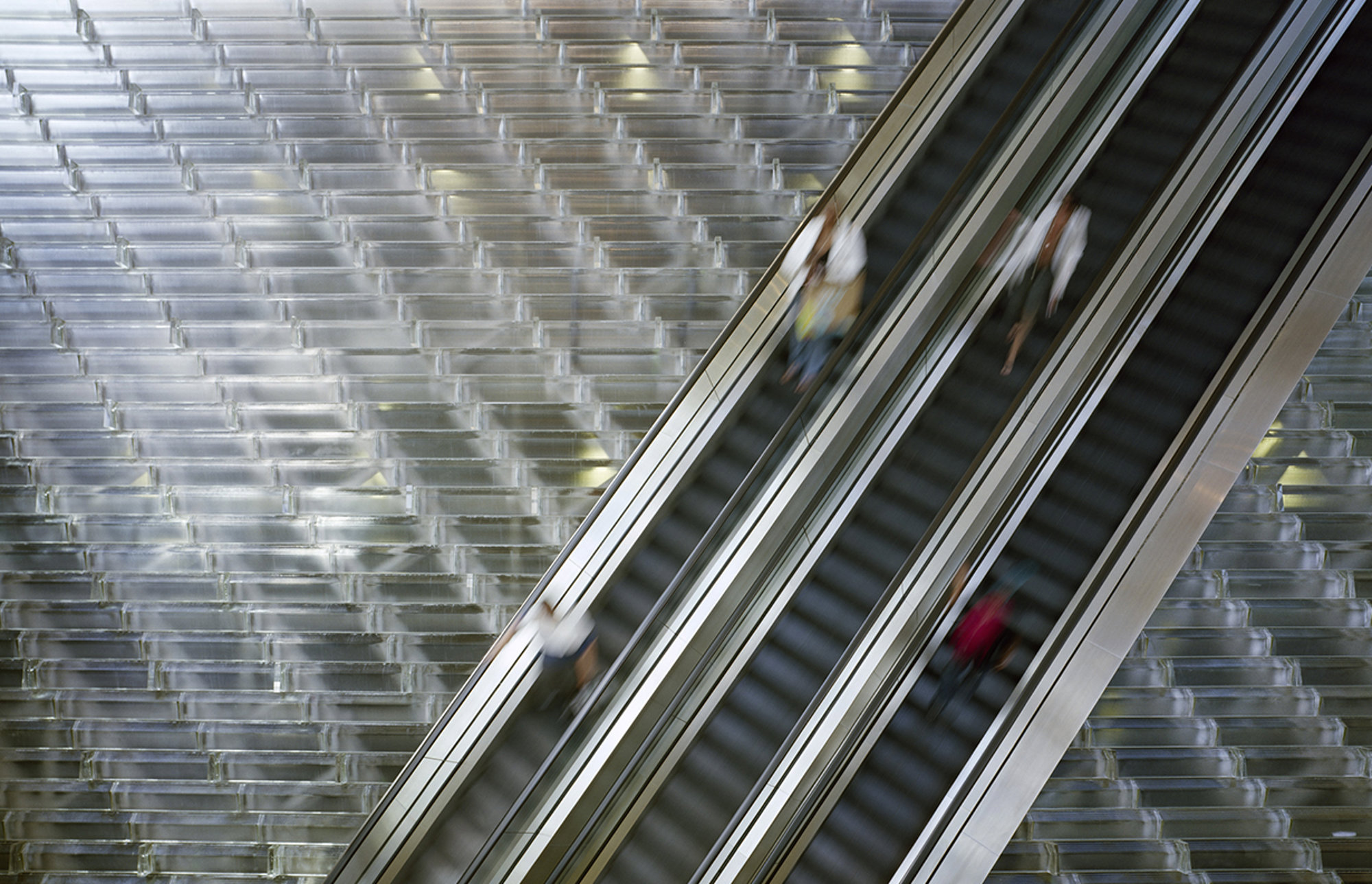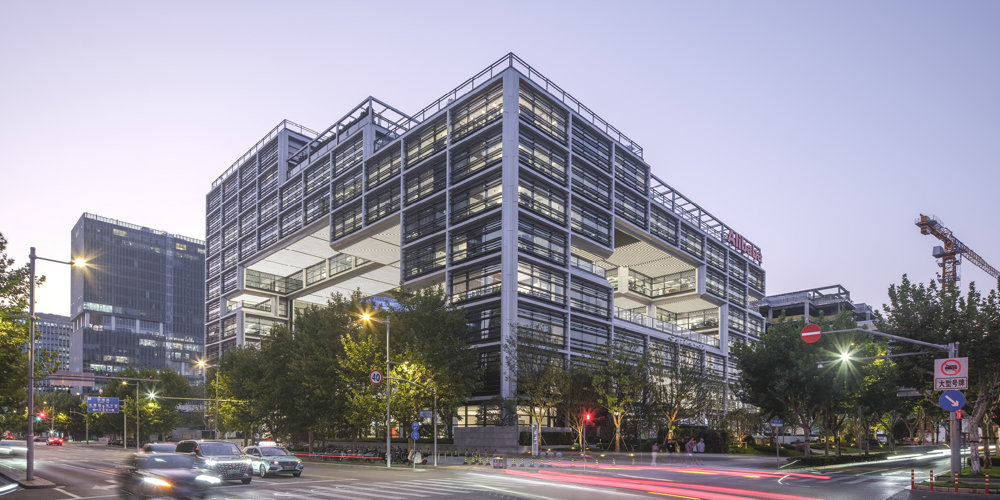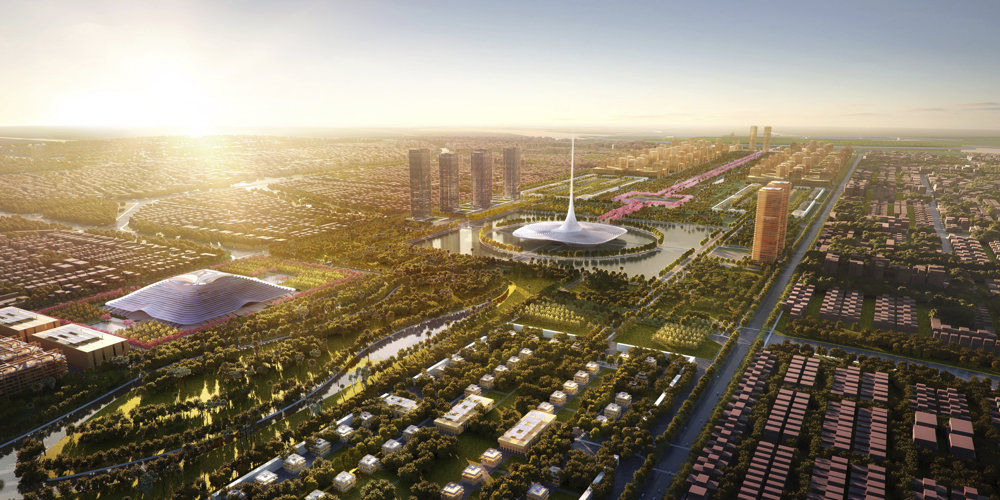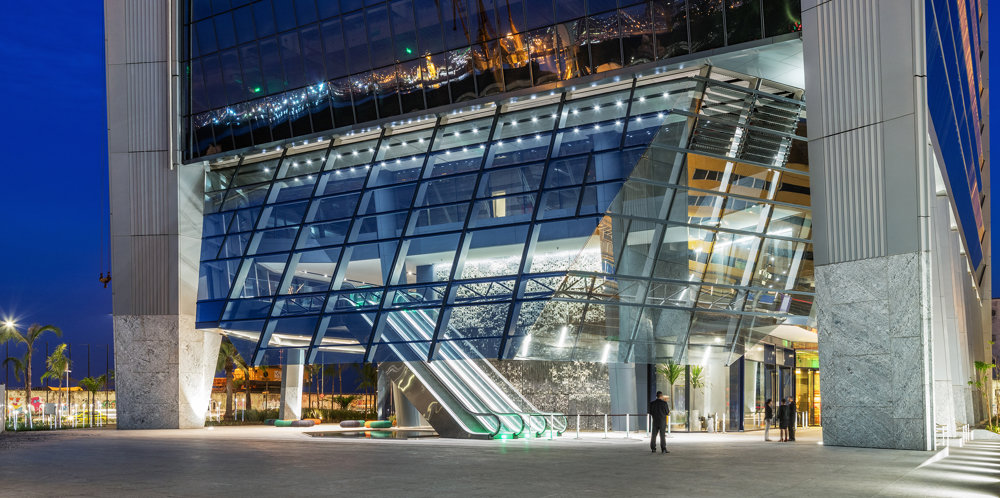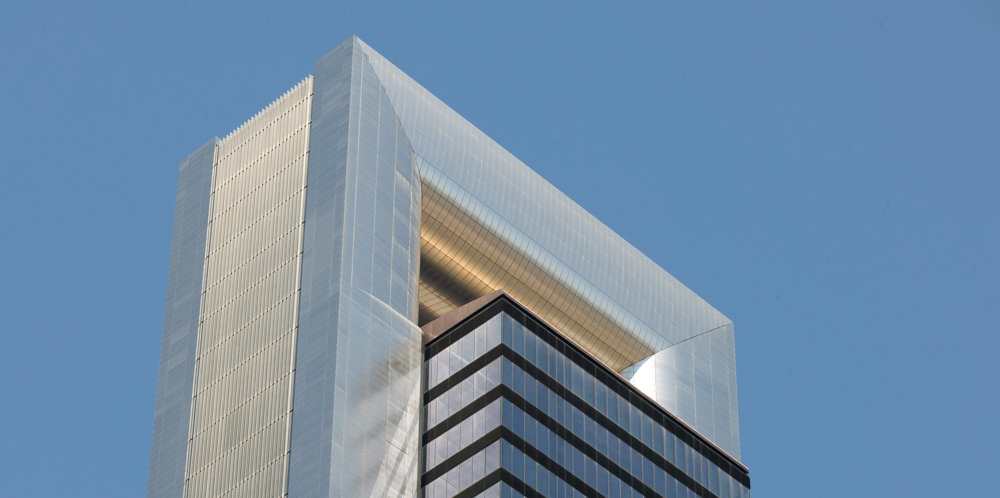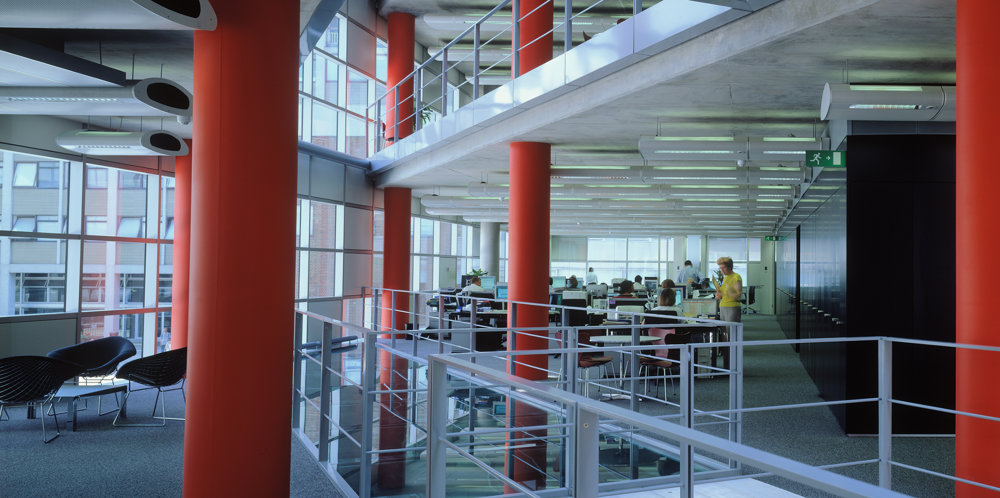Hearst Tower revives a dream from the 1920s, when publishing magnate William Randolph Hearst envisaged Columbus Circle as a new media quarter in Manhattan. Hearst commissioned a six-storey Art Deco block on Eighth Avenue, anticipating that it would eventually form the base for a tower, though no such scheme was ever advanced. Echoing a retrofit approach developed in the Reichstag and the Great Court at the British Museum, the challenge in designing such a tower at seventy years remove was to establish a creative dialogue between old and new.
The new tower rises above the old building to a height of forty-four-storeys, linked on the outside by a skirt of glazing that encourages an impression of the tower floating weightlessly above the base. At the base of the tower, the main spatial event is a lobby that occupies the entire floor plate of the old building and rises up through six floors. Like a bustling town square, this dramatic space provides access to all parts of the building. It incorporates the main elevator lobby, the Hearst staff cafeteria and auditorium, and mezzanine levels for meetings and special functions. Structurally, the tower has a triangulated ‘diagrid’ form – a highly efficient solution that uses 20 per cent less steel than a conventionally framed structure. With the corners cut back between the diagonals, it creates a distinctive facetted silhouette on the Manhattan skyline.
The building is also significant in environmental terms. It was built using 85 per cent recycled steel, its heating and air-conditioning equipment utilises outside air for cooling and ventilation for nine months of the year, and it consumes 25 per cent less energy than an equivalent office building that complies minimally with the respective state and city codes. As a result, it was the first office building in Manhattan to achieve a gold rating under the US Green Building Council's Leadership in Energy and Environmental Design (LEED) programme in 2006. Since earning that prestigious honor, the building also received LEED Platinum certification in 2012 for the operations and maintenance of its existing building. As a company, Hearst places a high value on the quality of the working environment - something it believes will become increasingly important to its staff in the future - and it is hoped that Hearst's experience may herald the construction of more environmentally sensitive buildings in the city.









